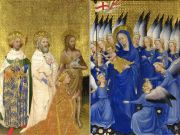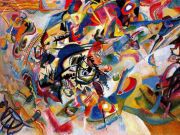Daniel Pipes, president of the Middle East Forum, taught European and world history at the University of Chicago; [email protected].
Eliminating courses on Western civilization ranks as one of the many radical changes in the American university over the last few decades. Symbolically, the shift began in January 1987, when Jesse Jackson led Stanford University students who, in a farcical demonstration with deep implications, shouted “Hey-hey, ho-ho, Western culture’s got to go.” And go it did. Those students, writes Stanley Kurtz in The Lost History of Western Civilization, not only succeeded “to dismantle Stanford's required course on the history and great works of Western Civilization . . . but [they] helped set off a ‘multiculturalist’ movement that swept away Western Civilization courses at most American colleges and set the terms of our cultural battles for decades to come.”
Western civ courses matter because they help the intelligent citizen and voter understand three topics: how things came to be; what works and what does not; and where one fits into the world. Their abandonment leaves tomorrow’s leaders less capable.
In the late 1970s, well before Jesse Jackson marched through Palo Alto, I taught this course using the History of Western Civilization: A Handbook (1969) by William H. McNeill, my mentor, as the basic text. Only in retrospect, having watched the spread of multiculturalism, do I now recognize McNeill’s spirit of cultural confidence. He calmly surveyed the highlights, spontaneously assumed the importance of Europe and its offshoots, unthinkingly asserted their accomplishments, and uncontroversially presumed these to be positive.
In the post-ho-ho era, though, I got to thinking that a non-multicultural history of Western civ surely must deal differently with its subject matter; it cannot maintain McNeill’s aloofness but has to jump into the fray and fight that new enemy. How might that work out? Searching for an example of such a book, I found Rodney Stark’s remarkable 2014 study, How the West Won: The Neglected Story of the Triumph of Modernity (2014).
Its title signals an ambitious, audacious, boisterous, and pugnacious reply to multiculturalism. Whereas McNeill devotes dozens of pages to Russia, Stark mentions it just twice in passing; it has no role in How the West Won. The Renaissance rates seventeen pages in McNeill’s history but Stark does not mention it once, finding it unimportant to his story. Same for Napoleon, with twelve pages and not a mention, respectively. Contrarily, McNeill breezes over the Spanish Empire’s gold and silver, whereas Stark devotes six pages to it. Less obviously, Stark promotes a pro-Christian message foreign to McNeill but exactly fitting this era of civilizational clash.
Also in contrast to McNeill, who serenely ignores other historians and their interpretations, Stark often takes outspoken issue with some element of conventional but misguided wisdom, whether the worthiness of Viking culture or Christianity’s role in the rise of the West. In the course of these disputations, he takes on such prominent intellectual figures as Fernand Braudel, Henri Pirenne, and Max Weber. If McNeill quietly builds on his predecessors, Stark challenges them. Where McNeill writes consensus history, Stark writes revisionism.
Getting down to specifics, Stark ignores the academy’s prevailing anti-Western mood and defines modernity as the bundle of advances that define the West. Except for a few “bits and pieces,” he dares assert, it “is entirely the product of Western civilization.” Going yet further, he states that, “to the extent that other cultures have failed to adopt at least major aspects of Western ways, they remain backward and impoverished.” He takes no prisoners. It’s a Western party.
How this party came to be is the topic of his sharply written and fast-paced book. It deserves a full reading, but here is a taste of some highlights: “Very little happened” in ancient empires. Interrupted only by suppressing occasional revolts, capricious and predatory rulers mercilessly extracted labor and wealth from their oppressed subjects. Classical Greece broke the mold with its small, independent city-states hugging several seas like “frogs around a pond.” Their successful methods of war, premised on free men fighting for their families, bestowed on them the freedom to develop extraordinary ideas in such diverse arenas as economics, the arts, and philosophy.
These ideas then influenced those Jews in the Greek cultural orbit. The two strains combined in Christianity, a Hellenized and universalized version of Judaism. “It was the fully developed Jewish concept of God . . . that shaped Christian theology and underlay the rise of the West.” To this base, Greek philosophy added reason and logic. The mix produced a unique idea of progress, something not found in any other civilization. Science, in turn, arose “because the doctrine of the rational creator of a rational universe made scientific inquiry possible.”
Contrary to those historians who assign Europe’s predominance to its geography or to some breakthrough like guns or capitalism, Stark dwells on the primacy of ideas, and the Judeo-Christian tradition within those ideas. In perhaps the key passage of How the West Won, Stark argues that “the Christian conception of God as the rational creator of a comprehensible universe . . . continually prodded the West along the road to modernity.” One can almost hear the multiculturalists gagging.
Eventually, new empires extinguished these civilized exceptions, culminating in the dreary Roman Empire, which Stark dismisses as “at best a pause in the rise of the West, and more plausibly . . . a setback.” The repressive Romans excelled not at innovation but at technological achievement, a result of the combination of political domination and the widespread availability of cheap slave labor. One of the greatest of these achievements, the Colosseum, hosted about 200,000 killings, an apt symbol of its desolate soul.
Stark’s refreshing revulsion against empires leads him, unconventionally, to celebrate the so-called Barbarians’ destruction of Rome’s empire and the resumption of “the glorious journey toward modernity.” The “Not-So-Dark Ages” of roughly A.D. 400-1000 marked a time when more than a thousand independent polities emerged in Europe and spawned an era blessed with cultural diversity and political disunity. This “enabled extensive, small-scale social experimentation and unleashed creative competition.” With the demise of the parasitical Roman elite and its luxuries paid for by oppressive taxes, a higher standard of living for the masses resulted, as shown by better food and larger bodies.
Indeed, the era was one of the most innovative ever, the start of Europe’s “technological and intellectual leaps forward that put it ahead of the rest of the world.” Examples include the heavy plow, the horse harness, water- and windmills, sail boats, and an unmatched military technology. Trade increased. Cultural achievements included oil paintings, polyphonous music, and soaring cathedrals.
The later medieval period saw other noteworthy developments, including the abolition of slavery, the rise of capitalism (which grew out of large monasteries as early as the ninth century), and the beginnings of representative democracy.
Stark strikingly connects technology to historical developments, as suggested by this not-atypical sentence: “A number of innovations can plausibly be attributed to the Little Ice Age [ca. 1350-1850]: glass windowpanes, storm doors, skis, ice skates, sunglasses . . . distilled liquors, trousers, knitted clothing, buttons, and chimneys.” In a fascinating aside, he links chimneys to the building of small rooms and sex consequentlyevolving from a semi-public to a private activity.
Theology, usually dismissed as a fusty religious pursuit, here is celebrated. In pursuit of studying God’s nature and its relation to humans, Stark argues that its practitioners, the Scholastics, “founded Europe’s great universities, formulated and taught the experimental method, and launched Western science.” From the founding of the first university in Bologna in 1088, these institutions sought to go beyond received wisdom; esteeming innovation, they emphasized empiricism. Academic freedom, surprisingly, originated in 1231, when the pope exempted the University of Paris from control by civil authorities.
In contrast to this homage to medieval institutions of learning, Stark dismisses the “Scientific Revolution” of ca. 1550-1700, as a fraud “invented to discredit the medieval church.” For example, he shows how Copernican heliocentrism, which posits the earth revolving around the sun, did not emerge de novo but culminated a line of research and innovation by priests and monks that went back three centuries and included no less than Robert Grosseteste, John of Sacrobosco, Albertus Magnus, Roger Bacon, Campanus of Novara, Theodoric of Freiburg, Thomas Bradwardine, William of Ockham, Jean Buridan, Nicole Oresme, Albert of Saxony, Pierre d’Ailly, and Nicholas of Cusa.
On a more practical level, Stark traces the industrial revolution to medieval Europe and its “rise of banking, elaborate manufacturing networks, rapid innovations in technology and finance, and a busy network of trading cities.” That “revolution” in reality was more an evolution that began in England with the mechanization of the textile industry about a thousand years ago. In particular, the era 1200-1500 saw “remarkable” technological progress in such key areas as metallurgy, shipbuilding, and weaponry.
Rather than the conventional scientific revolution of 1550-1700, Stark proposes that science only came of age in this era, emphasizing two points: First, this was a purely European phenomenon: for example, while many civilizations had alchemy, “only in Europe did alchemy develop into chemistry.” Second, a majority of leading scientists were devout Christians engaged in figuring out the Intelligent Designer. In other words, as in medieval times, “Christianity was essential to the rise of science.” In effect, “the Judeo-Christian conception of God encouraged and even demanded” scientific inquiry.
These advances gave Europeans the means to go out into the world for trade and conquest. They first hugged the coast of Africa, then ventured into the Atlantic, and finally ventured into open oceans and sailed the globe.
The greatest immediate impact of these voyages came from the vast treasure brought home by Spain’s domination of South and Central America. Stark, however, dismisses the Spanish empire as only deceptively rich, being based on a nearly inexhaustible supply of silver and gold but not real wealth; thus did it set Spain up to remain “an underdeveloped, feudal nation.” Free money did not make up for the costs of its empire, which “bled wealth” from Spain. With time, the Dutch and English capitalist empires readily pushed Spain’s aside.
Then followed the high tide of the industrial revolution, when agricultural productivity, cheap energy, low birth rates, high wages, and a commercial outlook gave Britons the incentive to build machines that could replace “humans as the primary means of production.” Steam engines and inexpensive manufactured goods caused the standard of living to soar, longevity to double, and massive urbanization to begin. Then along came the United States to take over from Great Britain as leader in resources, education, wages, inventiveness, technology, and productivity. In these ways did modern Western life culminate a process that had begun nearly three millennia earlier in Greece.
Finally, European colonialism, for all its problems, spread modernity—education and the rule of law especially—to much of the world and thereby improved the quality of life of the colonized. Ironically, while colonialism benefited some elements in the imperial centers, overall it “was a losing proposition” for the average European. More broadly, during the high mark of colonialism, 1870-1914, “European nations as a whole lost money on their colonies.”
How the West Won ends thus: “No doubt Western modernity has its limitations and discontents. Still, it is far better than the known alternatives—not only, or even primarily, because of its advanced technology but because of its fundamental commitment to freedom, reason, and human dignity.” Stark’s snappy, robust, and refreshing study wonderfully replies to multiculturalism’s self-hating and guilt-ridden misanthropy.
As someone who taught this topic in the good old days, I recognize that Jesse Jackson’s acolytes inadvertently have made Western civ a more exciting subject than it used to be. Now, students need to benefit from this new spirit. The challenge is to get books like How the West Won into the university curriculum, where it has a long way to go; Open Syllabus Explorer finds it listed in just three U.S. courses.
Image: A. Savin, Public Domain














